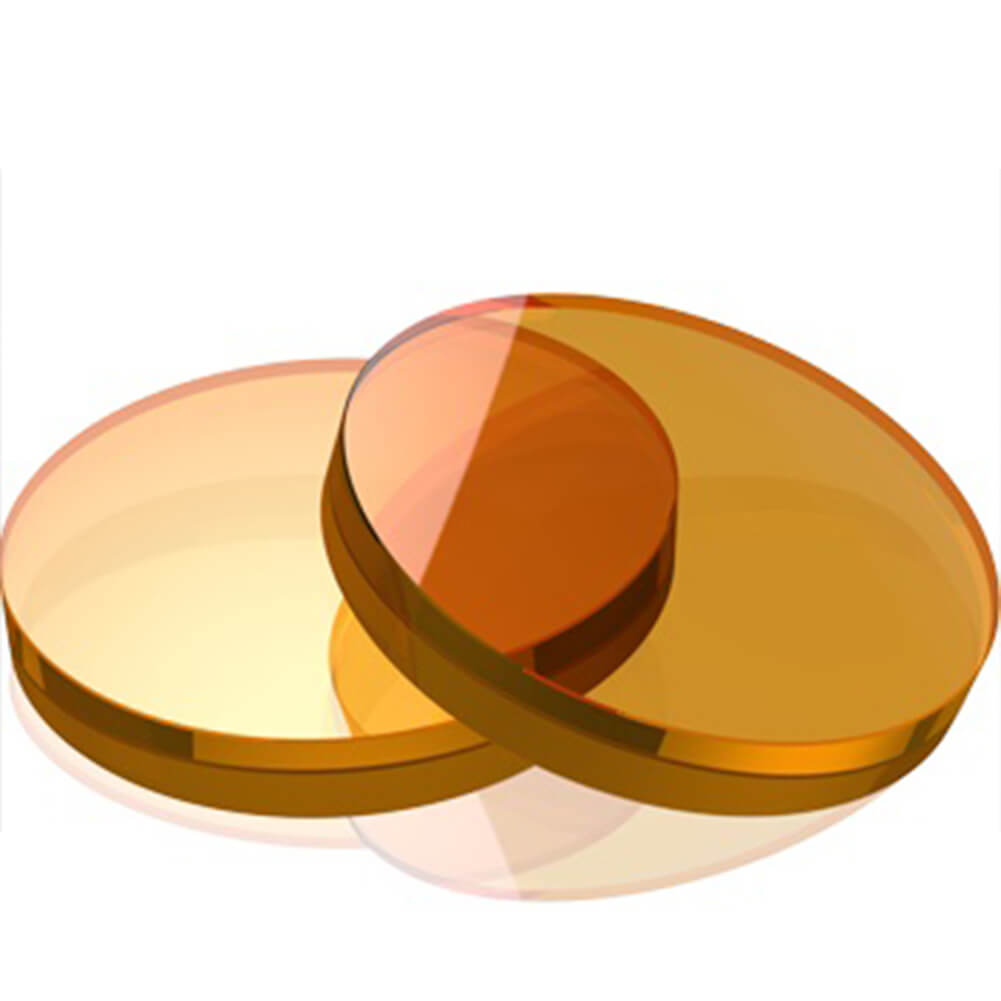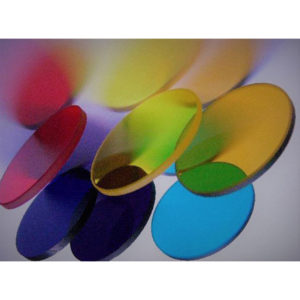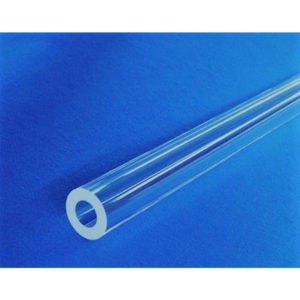The transmission range of Zinc Selenide ZnSe-CVD is (0.5 – 20) microns. ZnSe CVD used for high power CO2 laser optics at 10.6 microns, for protective optics windows or optical elements in FLIR (forward looking infrared) thermal imaging equipment, optics for medical and industrial applications (optical plane parallel windows (plates, disks, blanks), wedged windows, optical meniscus, spherical and cylindrical lenses, prisms, resonator mirrors of CO2 laser).
The refractive index is near 2.4. Zinc Selenide has a very low absorbtion coefficient and is used extensively for high power infrared laser optic. It is non-hygroscopic.
Zinc Selenide (ZnSe) – transparent in wide spectral range from yellow (visible) to far IR. ZnSe material is a chemically inert, non-hygroscopic and highly pure product that is very effective in many optical applications due to its extremely low bulk losses, high resistance to thermal shock and stability in virtually all environments, easily machined.
To obtain superior transmittance, ZnSe crystals are grown by Chemical Vapor Deposition process (CVD). Zinc Selenide CVD is polycrystalline material, demonstrates superior CO2 laser transmittance and is employed in the transmission optical components used in CO2 laser processing.
ZnSe (Zinc Selenide) Chemical Vapor Deposition (CVD) material is produced by synthesis from zinc vapor and H2Se gas, forming as sheets on graphite susceptors (ZnSe-CVD processes). Chemical purity of CVD-ZnSe 99.999%. It has a polycrystalline structure; the grain size of Zinc Selenide CVD material is controlled to produce maximum strength and machinability.
| ZnSe properties | |
| Chemical Formula | ZnSe |
| Molecular Weight | 144.33 |
| Crystal Class | Cubic, hexagonal |
| Crystal Structure | Polycrystalline |
| Density, g/cm3 at 293 K | 5.27 |
| Melting Temperature, K | 1790 |
| Thermal Conductivity, W/(m K) at 300 K | 18 |
| Thermal Expansion, 1/K at 173 K at 273 K at 473 K |
5.6 x 10-6 7.1 x 10-6 8.3 x 10-6 |
| Specific Heat, cal/(g K) at 296 K | 0.081 |
| Debye Temperature, K | 246 |
| Bandgap, eV | 2.7 |
| Solubility in water at 298 K | 0.001 g/100 g H2O |
| Knoop Hardness, kg/mm2(100 g load) | 105 |
| Young’s Modulus, GPa | 70 |
| Bulk Modulus, GPa | 40 |
| Poisson’s Ratio | 0.28 |
| ZnSe index of refraction | ||||||||||||||
| Wavelength, µm | 2.75 | 5.00 | 7.50 | 9.50 | 11.0 | 12.5 | 13.5 | 15.0 | 16.0 | 16.9 | 17.8 | 18.6 | 19.3 | 20.0 |
| Refractive Index | 2.44 | 2.43 | 2.42 | 2.41 | 2.40 | 2.39 | 2.38 | 2.37 | 2.36 | 2.35 | 2.34 | 2.33 | 2.32 | 2. |




